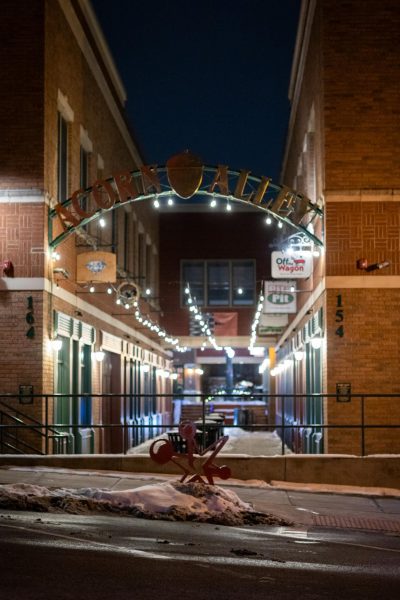Guest Column: Progress in South means blacks can safely return
October 11, 2012
Isabel Wilkerson’s Pulitzer Prize-winning book helped me understand the 20th-century movement that drove my dad and 6 million other blacks from the South. Yet in the 21st century, it attracted my 29-year-old daughter, Adrianne, back to the land of her forebears.
“The Warmth of Other Suns: The Epic Story of America’s Great Migration” explains how the young generations after World War I and World War II were pushed from the South by racism, discrimination, violence and Jim Crow. They were pulled to cities in the North, including Philadelphia, New York, St. Louis, Detroit, Chicago and Kansas City.
They sought the right to vote, better housing, good schools and opportunities.
“Their individual actions, added together, benefited their children, their grandchildren, and even those they left behind in the South as much as if not more than themselves,” Wilkerson wrote. “The migration helped other people of color – the later arrivals from Asia, South and Central America and the Middle East – whose worlds opened up further as the country liberalized its views of diversity.
“The Migration exposed white Americans outside the South to black culture and created an opportunity – much of it missed – to bridge the races in the New World. The Migration changed American culture as we know it.”
Wilkerson tells the story of the 1915 to 1970 migration through the personal journeys of three individuals. The book added historical depth to my dad’s reasons for leaving his Virginia home during the Depression, first for college at West Virginia State and then Cornell University for his master’s and doctorate in chemistry. In 1947 Dad joined his older brother, William, who settled in St. Louis after graduating from Howard University School of Law. Other family members shed the chains of the South to live like free men in the North.
William Sherwood Diuguid became the first black magistrate in St. Louis. Dad was the first black chemical company owner. They hated being second-class citizens in the South, but they loved their Virginia roots.
My mother was a St. Louisian. Migrants marrying northerners was not unusual.
My siblings and I experienced the influx of people during the Great Migration, which Wilkerson compares to centuries of immigrants coming to these shores “yearning to breathe free.” The black migrants swelled the segregated classrooms at our schools.
The influx of black families from the South made housing pricy in the black community and hard to get. Many families lived in cramped conditions.
But they still came. The first waves followed World War I and then World War II. They came during the violence in the civil rights movement to keep from being killed in the racist South.
Wilkerson explains that unlike sociologists’ view of the Great Migration, black transplants helped improve conditions in the North for the better. They were described as “masses of ignorant, uncouth and impoverished migrants.”
But in fact the migrants were “better educated than those they left behind in the South and on the whole had nearly as many years of schooling as those they encountered in the North,” Wilkerson wrote.
They were more likely to be married, raise children in two-parent households and be employed. They were less likely to be on welfare and had a solid work-ethic.
That describes my dad, his brothers and sisters and all of the African-Americans we knew. It’s why none of the stereotypes of black people made sense.
The book helped explain why my dad insisted after I finished college that I not take a job in the South. Those states still had a hard, nasty distasteful history, and Dad didn’t want it damaging my career.
But Dad didn’t feel that way when his first grandchild announced that she was taking a job with a newspaper in Greensboro, N.C., selling advertising. The civil rights movement had changed the South, making it more welcoming for African-Americans, Wilkerson’s book said.
It’s as it should be in America. It just took five generations and nearly 150 years after slavery ended for it to happen.
























